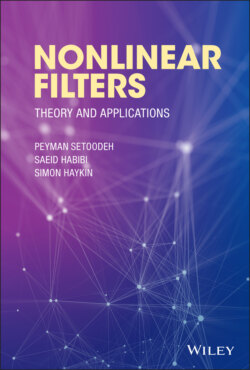Читать книгу Nonlinear Filters - Simon Haykin - Страница 30
2.8 Degree of Observability
ОглавлениеInstead of considering the notion of observability as a yes/no question, it will be helpful in practice to pose the question of how observable a system may be [29]. Knowing the answer to this question, we can select the best set of variables, which can be directly measured, as outputs to improve observability [30]. With this in mind and building on Section 2.7, mutual information can be used as a measure for the degree of observability [31].
An alternative approach aiming at providing insight into the observability of the system of interest in filtering applications uses eigenvalues of the estimation error covariance matrix. The largest eigenvalue of the covariance matrix is the variance of the state or a function of states, which is poorly observable. Hence, its corresponding eigenvector provides the direction of poor observability. On the other hand, states or functions of states that are highly observable are associated with smaller eigenvalues, where their corresponding eigenvectors provide the directions of good observability [30].
A deterministic system is either observable or unobservable, but for stochastic systems, the degree of observability can be defined as [32]:
(2.103)
which is a time‐dependent non‐decreasing function that varies between 0 and 1. Before starting the measurement process, and therefore, , which makes . As more measurements become available, may reduce and therefore, may increase, which leads to the growth of up to 1 [33].
